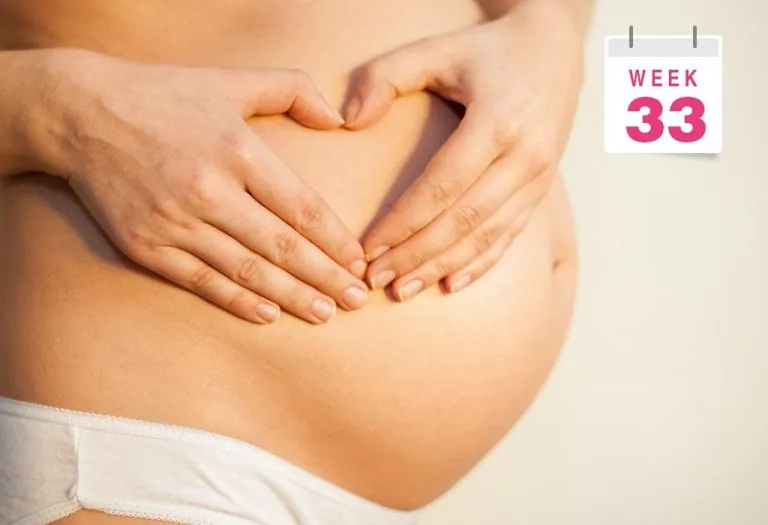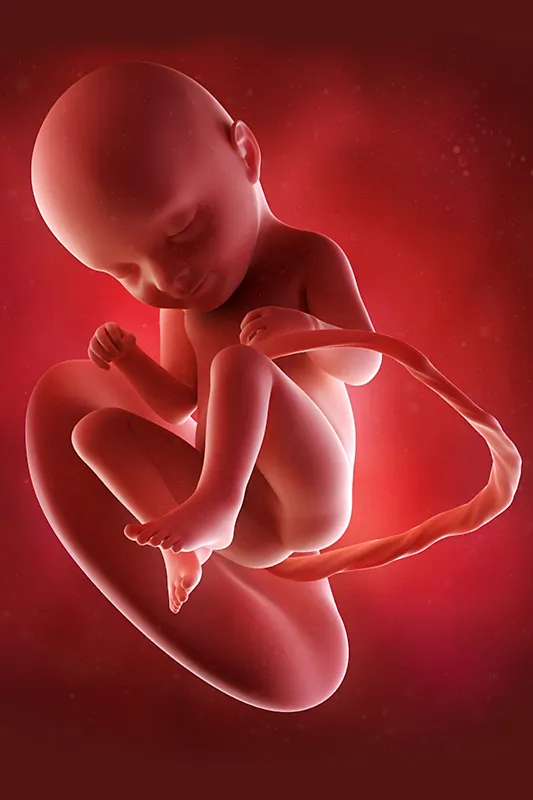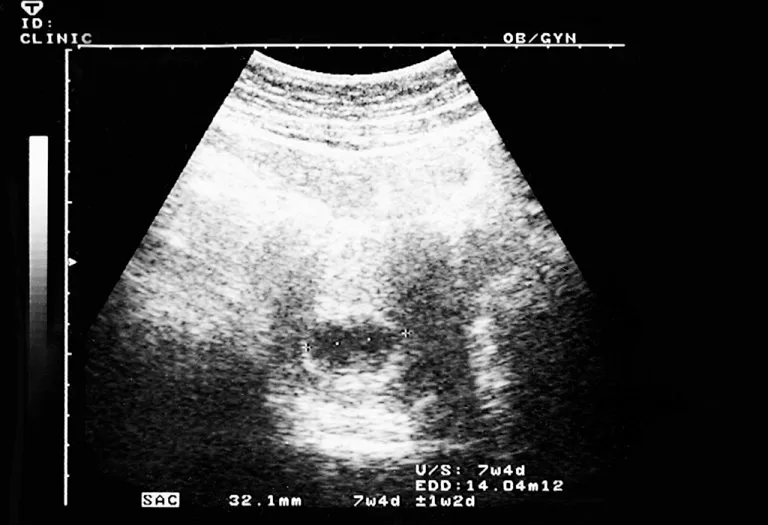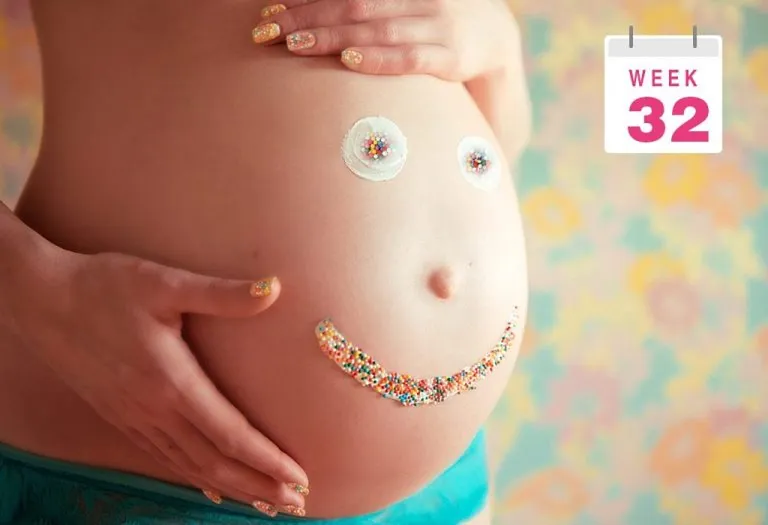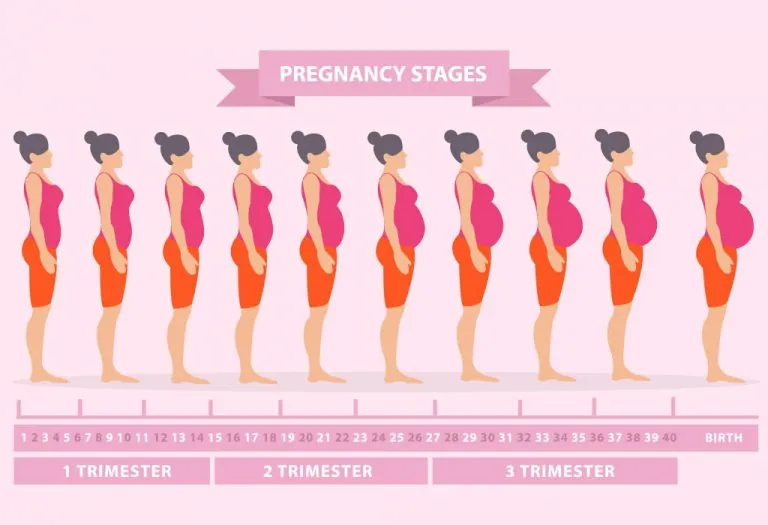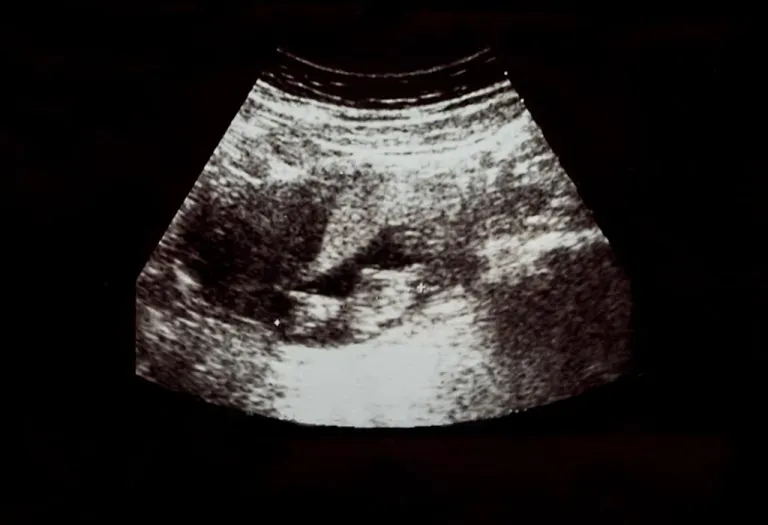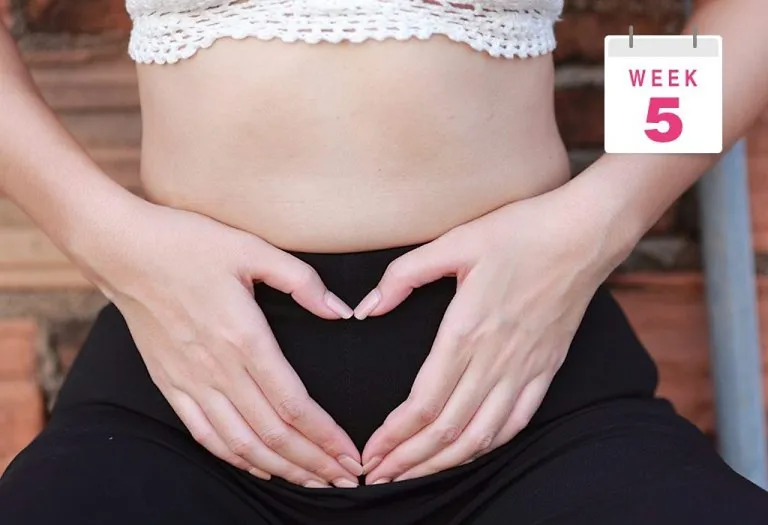33 Weeks Pregnant: Symptoms, Ultrasound & Belly Size

Congratulations! You are 33 weeks pregnant, and soon enough, you will welcome your little one into your life and home. The wait is almost over—a few more weeks of struggling with diets, medical appointments and unpleasant changes in your body. You are in the third trimester of your pregnancy, and it’s the time you must prepare for your baby’s delivery. But your little one is still developing. You will continue to waddle until delivery because of your grown baby bump, feel tired, and have Braxton-Hicks contractions to prepare you for delivery (1). This article will tell you everything you need to know about your baby’s growth at 33 weeks and the changes you should expect in your body during this time.
Your Baby’s Growth at 33 Weeks of Pregnancy
This is the final phase of your baby’s development. His organs, bones, muscles, and nervous system are completely formed, and with a few ‘finishing touches,’ he will be ready. Their bones are beginning to strengthen as well. The structure of your baby’s skull is uniquely adapted to facilitate a smoother passage through the birth canal. It remains soft and divided until after delivery, allowing it to shift and adjust while still safeguarding the brain (2). Any remaining nails and hair must have fully formed by now (3). Your baby’s nutrient requirements and oxygen requirements will be met by the placenta. However, the baby will exercise his breathing abilities by drinking the amniotic fluid.
The baby’s brain is developing faster than ever, forming more and more connections between the neurons. Your baby has the ability to tell the difference between daytime and nighttime, syncing his sleep-wake cycle with your own. His immunity is stronger than ever, getting protective antibodies from your blood through the placenta.
Size of the Baby at Week 33
At 33 weeks, your baby’s size should be around the size of a watermelon, measuring more than 42 cm from top to toe. With a weight of over 2 kg, his bones are strengthening while his skin fills in its wrinkles with baby fat, except for the skull, which remains pliable so it can safely move through the birth canal. With the lack of space in the uterus, there will be fewer kicks than usual, but you should still feel him squirming about (4).
Common Bodily Changes
You will experience several new body changes during pregnancy at 33 weeks.
1. Haemorrhoids
Perineal, anal or rectal bleeding might be due to haemorrhoids or, on rare occasions, a tear in the anal tissue. Ask your physiotherapist for a perineal massage. Apply ice packs or witch hazel pads to the perineum or sore area (5). Your doctor may even prescribe some oral or topical medication to deal with the pain.
2. Varicose veins
The rising pressure on the lower body by your expanding womb can cause leg veins to enlarge and start throbbing. These are known as varicose veins. If they end up red and stiff, you might have clotting and need immediate medical attention (6).
3. Nipple discharge
Your nipples are producing a yellowish liquid called colostrum, which is meant for the nutrition of the baby’s first few days. Your nipples will be leaking colostrum all through this week in preparation for your baby. Using absorbent pads inside your bra will prevent the stains from coming into view.
4. Insomnia
With the combination of all these symptoms, you will not be getting much sleep. Try not to work out or eat food too close to bedtime. Meditation and massages help as well.
Symptoms of Pregnancy at Week 33
The 33rd week is going to be pretty challenging. However, staying aware of any pains or discomfort and knowing remedies for them will help you get through them quickly enough. Here are some signs of 33 weeks pregnancy:
1. Trouble breathing
Your lungs aren’t able to expand enough to take in as much air as you would like because of the swollen uterus. This is another reason to make you feel tired. Avoid strenuous activities like running, lifting weights, or climbing weights.
2. Clumsiness
Your increased mass is going to impact your sense of balance, making you clumsier than before. Wear comfortable shoes with flat soles so you can keep some of your balance, at least at home.
3. Increased metabolic rate
Your body is going to start overheating as it tries to keep up with your increasing energy requirements. Warm skin is the only side effect, and it will pass sooner or later.
4. Headaches
Lack of hydration can cause your head to spin and throb. Drink minimum 3 liters of water a day, even if it means running to the bathroom every twenty minutes.
5. Backache
Backache is common at this stage because of the shift in gravity due to the expanding uterus. Have plenty of rest and do some low-impact exercises like yoga and pilates under observation. Swimming can also help relieve the pain (2).
Belly at 33 Weeks of Pregnancy
This week, you will likely be 10-15 kg heavier than normal, more if you’re carrying twins. Your 33-week pregnant belly size is touching 35-38 cm at this point, so keep the salves handy for any cracked or dry skin. Polyhydramnios, a condition resulting from the increase in amniotic fluid volume around the fetus, usually shows up around this time (7). So if your weight has increased more than usual, ask your doctor for advice.
Ultrasound Scan at 33 Weeks
An ultrasound this week would show you that your baby can open and close his eyes, depending on whether he is awake. You will see that your baby’s bones are becoming stronger, in addition to his fully developed organ systems. You might want to consider doing a biophysical profile with your ultrasound if you have any risk factors that might lead to complications.
The ultrasound scan will show (1):
- The physical shape and tone of the baby. The doctor will test for any issues with mobility, especially in the limbs.
- The volume of amniotic fluid, in higher or lower amounts, can create a problematic pregnancy that could result in premature birth or stillbirth.
- Foetal breathing motions are tested to make sure they are regular and normal.
What to Eat
Your 33rd-week pregnancy food has to include a balanced diet of fresh fruit, vegetables, lean white meats, eggs, dairy, and whole grains. Here are some suggestions for 33 weeks pregnant food to eat:
- Consuming food rich in omega-3 fatty acids, such as docosahexaenoic acid, can help with the neural development of your child.
- Research has shown that mothers who consume fish and flaxseed oils have children who score higher than average on standardised tests. However, fish tainted by mercury, such as sharks, swordfish, tuna, and mackerel, should be avoided.
- Flaxseed is also an option for people who prefer a vegetarian source.
- If your diet is incomplete due to budget, time or availability, ask your doctor for prenatal supplements.
- Avoid all kinds of alcohol, as research has proven that every single kind has a deleterious effect on pregnancies.
Tips & Care
Here are a few dos and don’ts to keep in mind during this period.
Dos
- You can attempt the different positions you could take during delivery. Some of them include getting down on your hands and knees, lying down, squatting, or using a birthing chair. Find the position most comfortable for you to ease your way through the contractions when they happen.
- Haemorrhoids can cause a lot of pain and embarrassment, but staying hydrated and consuming enough fibre can alleviate the symptoms.
Don’ts
- Don’t ignore any changes in your baby’s movements. If he stops or slows his kicks and pushes, immediately notify your doctor so tests can be conducted to ascertain the problem.
- Varicose veins are a common symptom of your second and third trimesters. Relieving them takes some effort, such as regular exercises like jogging and swimming. Avoid remaining in the same position for too long, even if it is sitting or lying down.
What You Need to Shop For
Breast pumps and bottles are the need of the hour. You might also do well to purchase some maternity clothes from Bella Mama. They have a good range of lingerie, like maternity bras, which are very important as the ribs expand during pregnancy. They have a very good collection of butterfly sleeve nursing nighties that provide easy and discreet nursing access. Nappies, baby clothing, and a crib for your baby to sleep in are equally important. Don’t forget to invest in a pram to move your baby around when you’re too tired to carry him.
FAQs
1. When and what should I pack in my hospital bag?
Since your term is near, you will probably want to start preparing your hospital bag about three weeks before your due date. If this is your first pregnancy, you are more likely to overpack. Do not worry, here are some major essentials to keep in your bag.
- A couple of loose and comfortable outfits, nursing bras, underwear, heavy-duty pads, and some disposable panties
- Toiletries
- Medical records, hospital documentation, and photo ID
- Phone charger
- A hat, warm socks, and a pair of outfits for the baby
- A car seat
2. How do I get my breech baby into the correct position?
If your baby is in the breech position at thirty-three weeks of pregnancy, don’t worry. They’ll continue to change positions for the next few weeks, and by the 36th week or by the time of delivery, they turn into the position on their own (8).
Although not proven, you can try playing music in the lower area of your uterus in the hope that the baby will follow the position or place something cold near the uterus top so the baby turns the other way. Consult your doctor before trying any of these methods to get your baby into position on your own.
3. When should I apply for maternity leave?
Although rules for maternity leave vary from country to country, it can be taken one to two months before your delivery date. If you are in your 33rd week, you should apply for your maternity leave now with HR and inform the necessary stakeholders.
At 33 weeks, you are very close to delivery. It is best to stock on the essentials in order to avoid rushing once the baby is born. Take good care of yourself, and your baby will develop just fine. If you notice something unusual, contact your doctor. She will be able to guide you better!
Previous Week: 32 Weeks Pregnant
Next Week: 34 Weeks Pregnant
Was This Article Helpful?
Parenting is a huge responsibility, for you as a caregiver, but also for us as a parenting content platform. We understand that and take our responsibility of creating credible content seriously. FirstCry Parenting articles are written and published only after extensive research using factually sound references to deliver quality content that is accurate, validated by experts, and completely reliable. To understand how we go about creating content that is credible, read our editorial policy here.
2. Tommy’s – 33 weeks pregnant: baby’s development, tiredness and signs of early labour
3. ACOG – How Your Fetus Grows During Pregnancy
4. American Pregnancy Association – 33 Weeks Pregnant
5. ACOG – What can I do for hemorrhoids during pregnancy?
6. Cleveland Clinic – Varicose Veins While Pregnant
7. Mayo Clinic – Polyhydramnios
8. Familydoctor.org – What Can I Do if My Baby is Breech?






